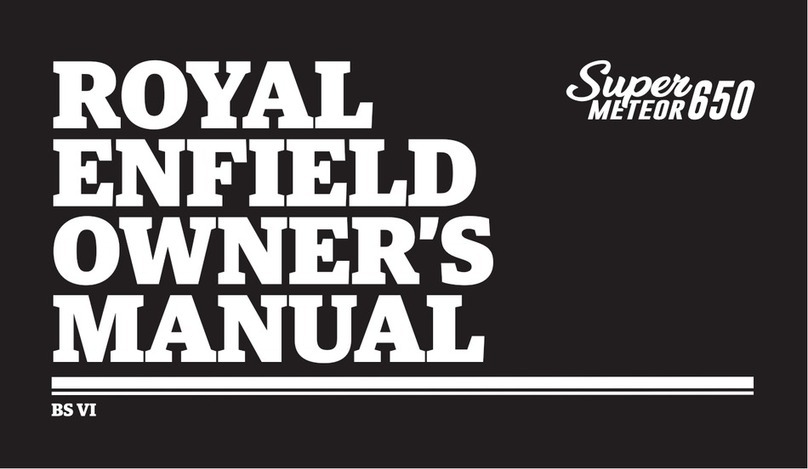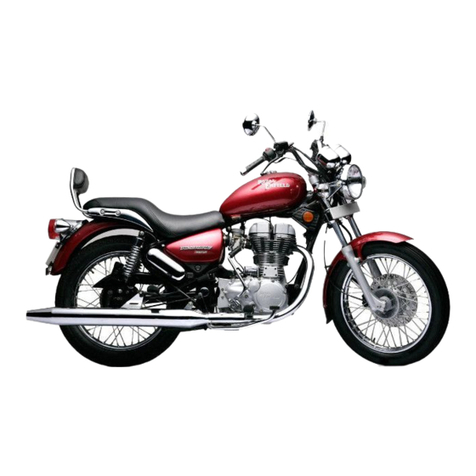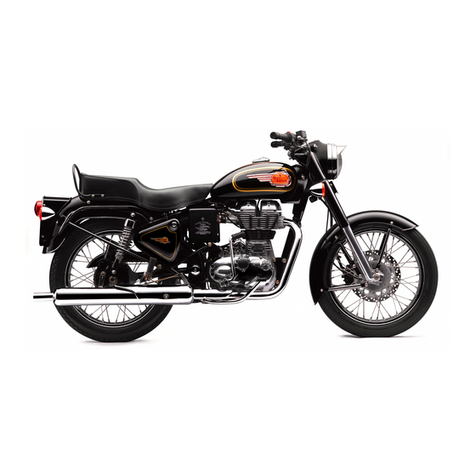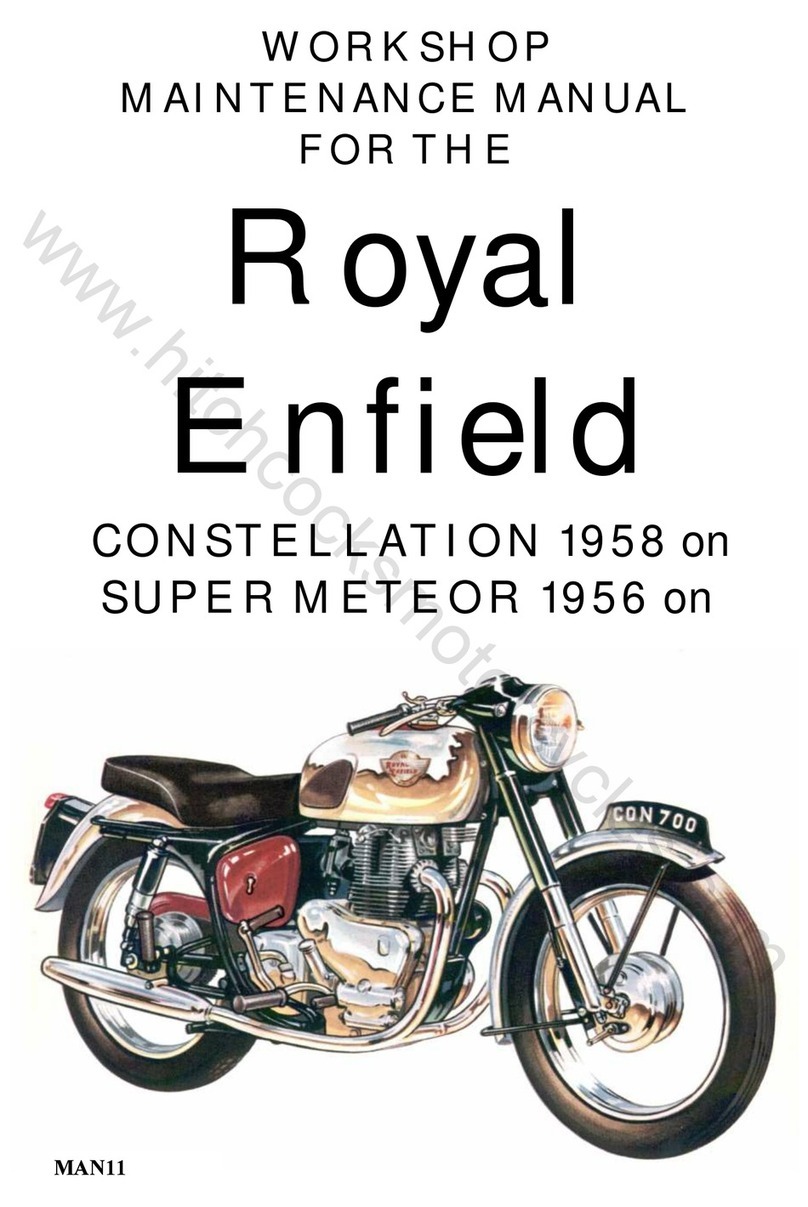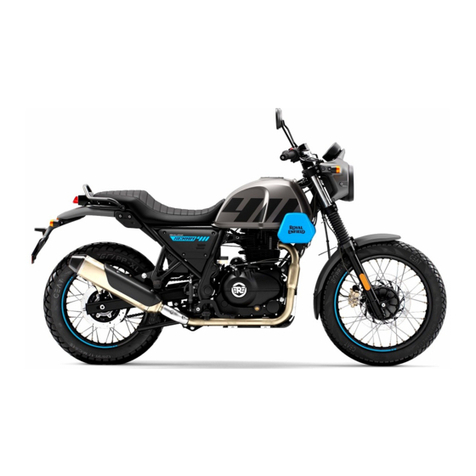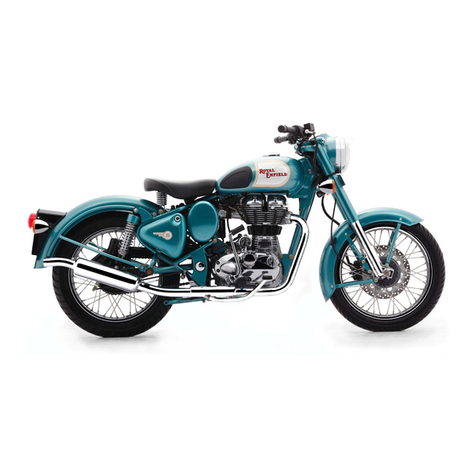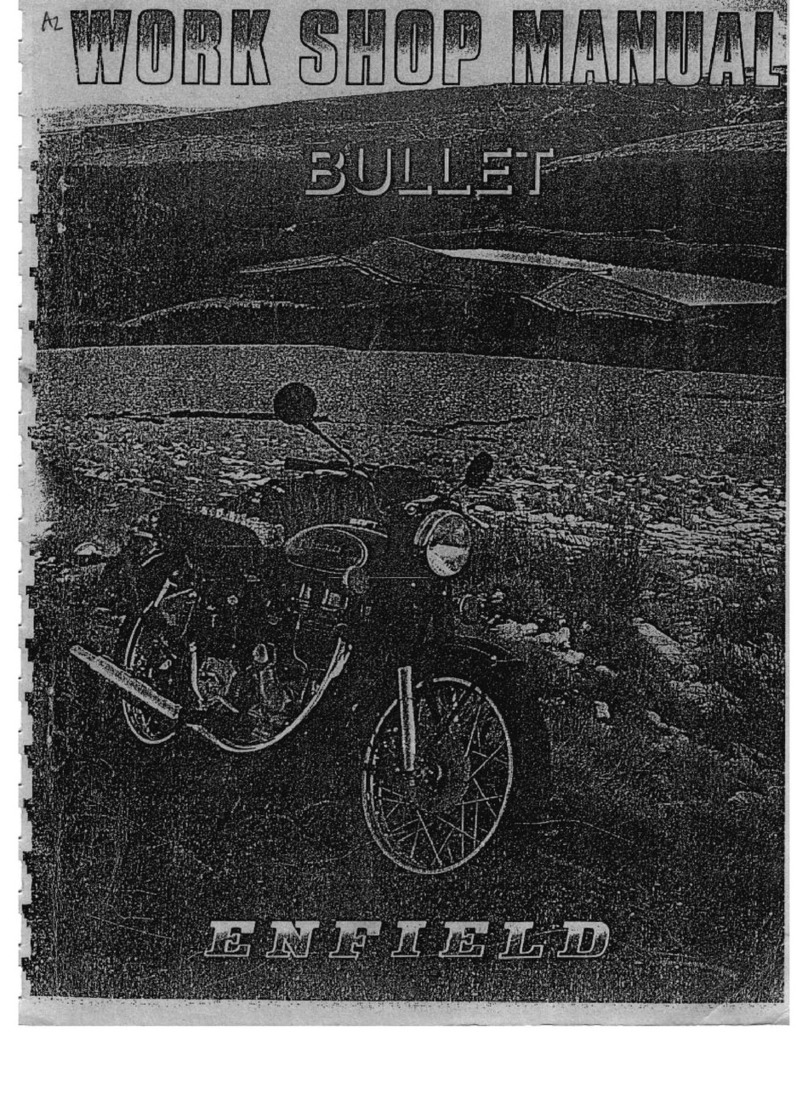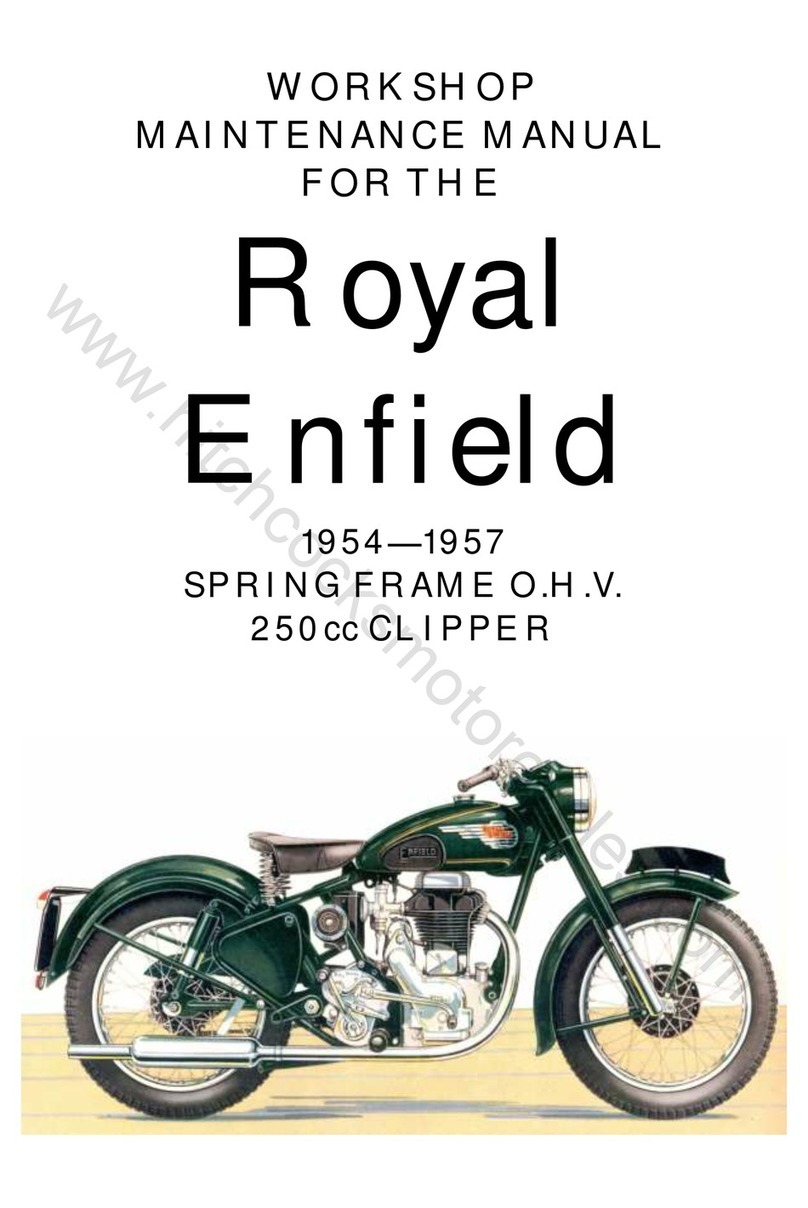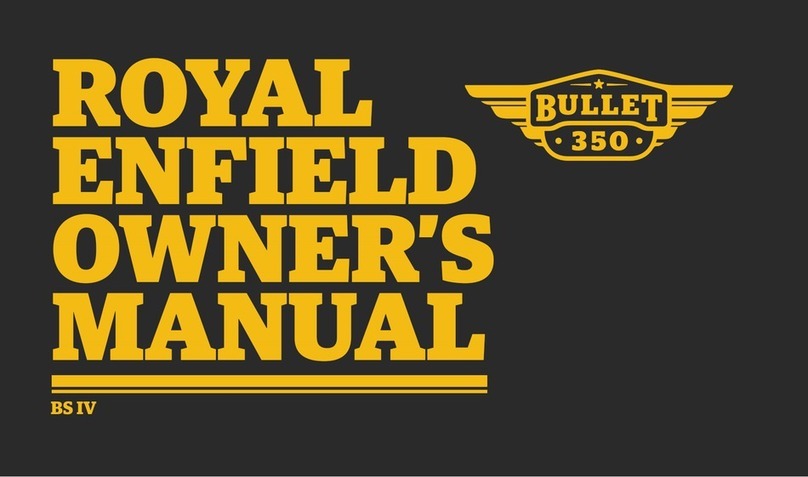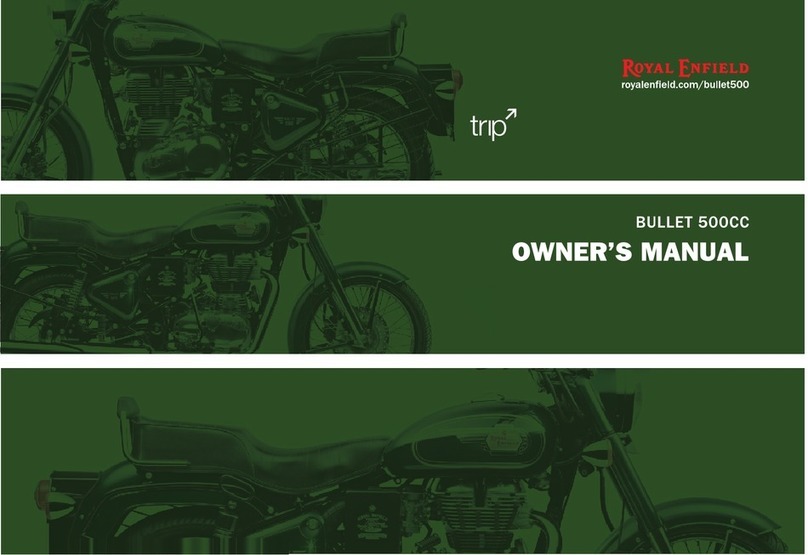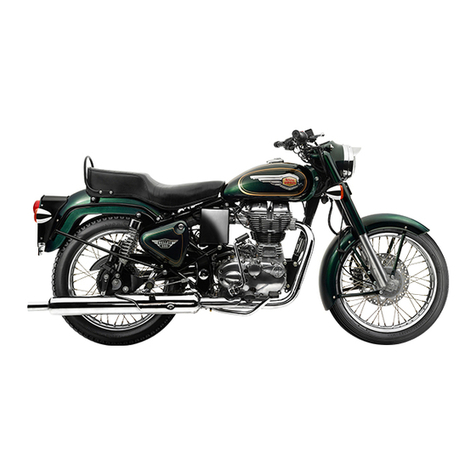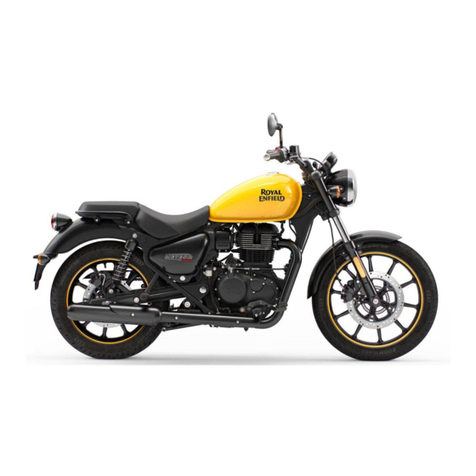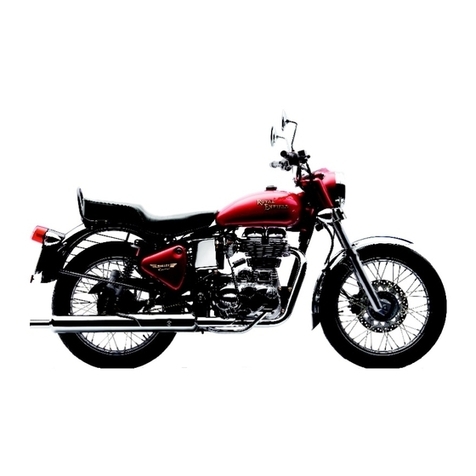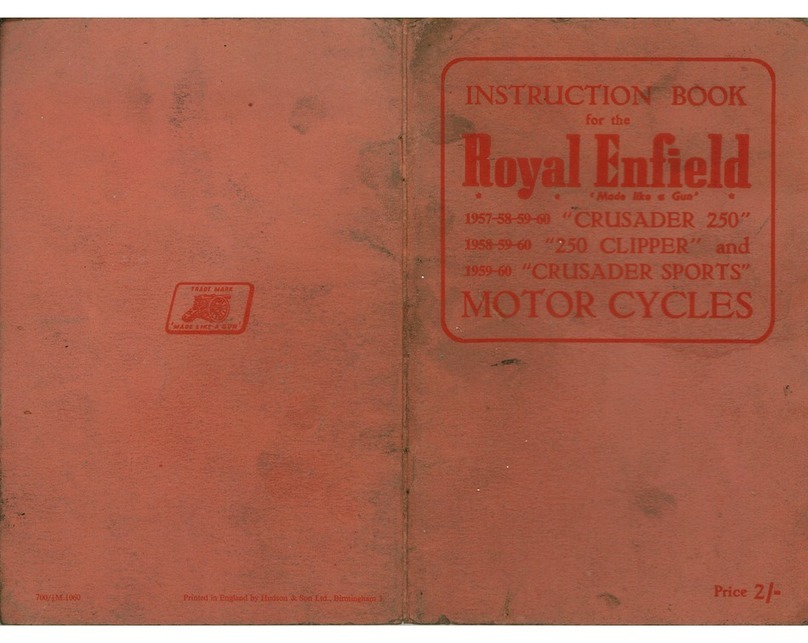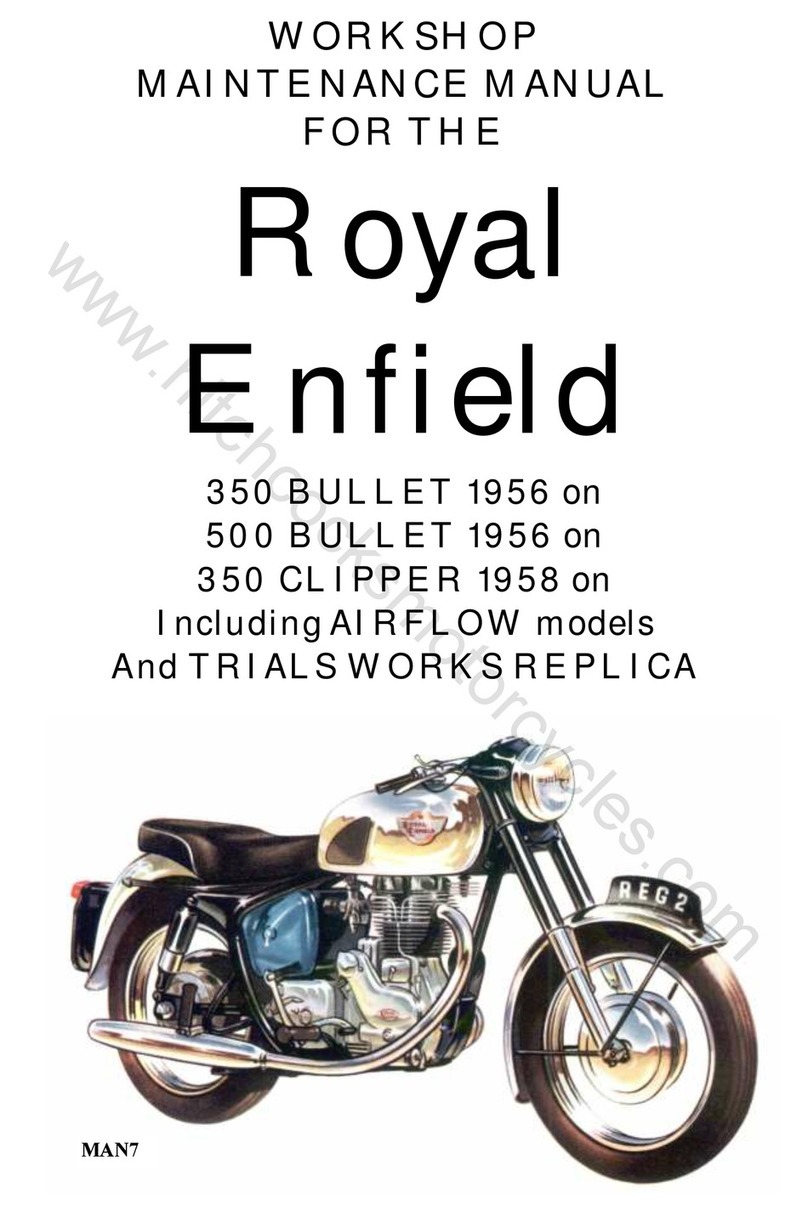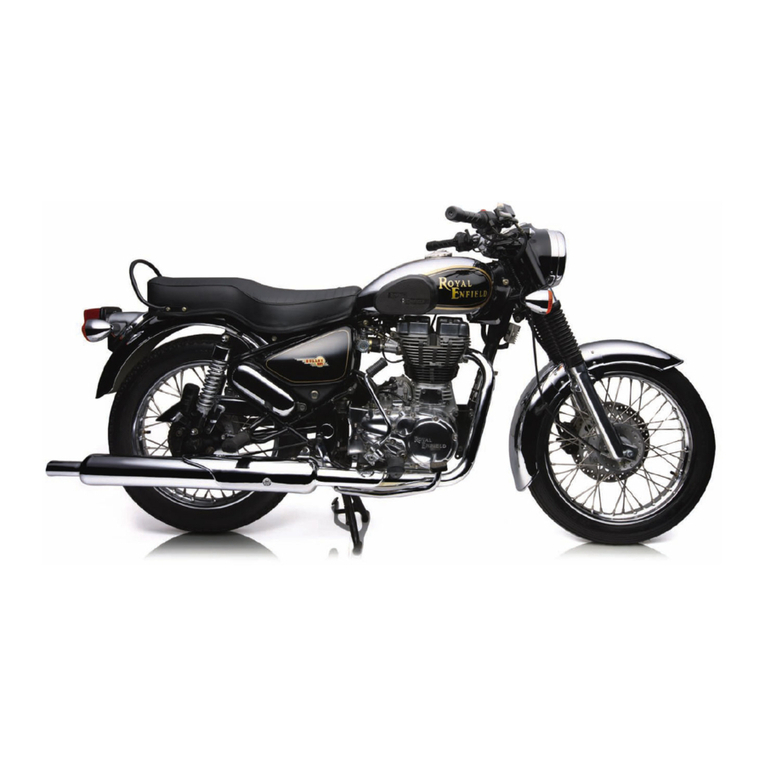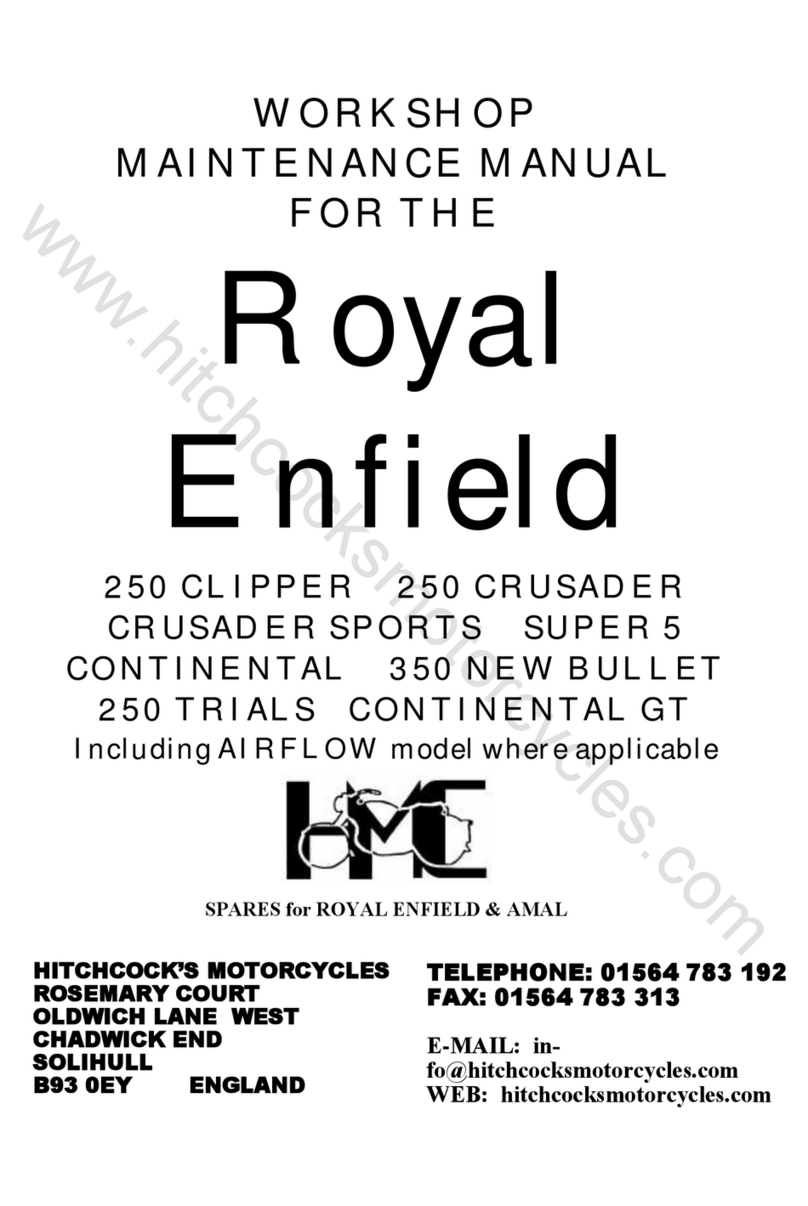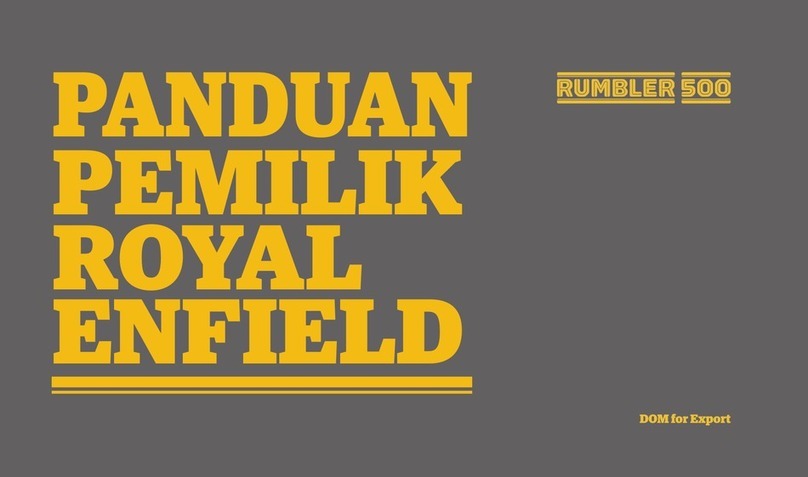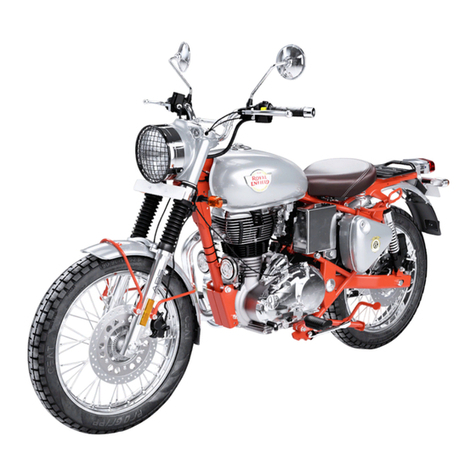
www.hitchcocksmotorcycles.com
Page
8 Royal Enfield
"Interceptor"
Workshop Manual
The
alternator
is
housed in the primary chain-
case, the permanent magnet rotor being mounted
on
the
end
of
the crankshaft and the six coil stator
fixed
to
the back of the chaincase. When a 12-volt
battery
is used the "Zener
Diode"
regulation system
is employed. This ensures maximum charge rate
when
the battery voltage is low, cutting down to a
trickle charge
as
the voltage rises.
The
magneto
is
chain-driven from the inlet
camshaft
at
half engine speed and the timing
is
band
controlled from a lever on the handlebar on
the
earlier models, while later models have an
automatic
centrifugal control incorporated in the
magneto
sprocket.
14.
Carburetters
Twin
Amal Monobloc carburetters with a bore
of
1¼ in. are fitted as standard.
On
the earlier
models only the left-hand carburetter contained
a float chamber, the right-hand instrument being
fed
by
a short flexible connecting tube joining the
two
jet
holders. Later, carburetters with right-hand
float chambers became available and were used on
the
right-handside ofthe machine with the standard
left-hand float chamber on the left.
15. Air Filter
Provision is made for housing twin 5 in.
diameter Yokes Micro-Vee felt and gauze dry
filters
in
a compartment
of
the toolbox,
but
the use
of
these may reduce the maximum speed slightly.
16. Lubrication System
Lubrication is by the Royal Enfield
Dry
Sump
system which is entirely automatic and positive in
action.
The
oil tank
is
integral with the crankcase,
ensuring the full rate
of
circulation immediately
the
engine is started and rapid heating
of
the oil in
cold
weather.
There
are two positively driven piston type oil
pumps
running
at
¼engine speed, one
at
the rear
of
the
timing cover for pumping oil to the bearings
under
pressure and the other
at
the front for
returning
the oil from the crankcase
to
the tank.
The
return
pump has a capacity approximately
double
that
of
the feed
pump
which ensures
that
oil does
not
accumulate in the crankcase.
The
oil from the big ends drains into the bottom
of
the
crankcase and
is
prevented by a baflie from
being drawn up by the flywheel.
The
oil from the rocker bearings is squirted
through
a small hole in each"rocker on to the top
ends
of
the push rods.
It
then flows down the
push
rod
tunnels into the cam tunnels, where
it
lubricates the cams and tappets. Oil from the
rear
(inlet) cam tunnel is then returned direct to
the
oil
tank
through a drilled passage. Oil from
the
front
(exhaust) cam tunnel overflows into the
timing chest, where it lubricates the timing chains
and
then drains
to
the sump beneath
the
baffle
plate
at
the bottom
of
the crankcase.
Both pumps are double acting, the primary side
of
the feed
pump
supplying the big ends and
the
secondary side the rockers and valve gear. Both
sides
of
the return pump combine to
pump
oil
back to the
tank
from the sumps
at
the
bottom
of
the crankcase.
A spring loaded relief valve controls
the
pressure
of
the oil to the valve rocker gear which
is
through external pipes.
A gauze strainer
is
provided for thefeed oilleav-
ing the
tank
and
there
is
a large capacityfelt filter in
the feed
to
the big ends. An aluminium cylinder is
fitted over the fixing stud inside the filter element
to reduce the volume
of
oil required
to
fill the
filter after
it
has been dismantled for cleaning
and
to
ensure the rapid
flow
of
oil to the big ends.
A small circular magnet is also fitted over the
fixing stud inside the oil filter for the purpose
of
collecting any ferrous particles which
may
be sus-
pended
in
the oil.
17. Breather
Two separate breathers are fitted
to
ventilate
the crankcase. The driving end
of
the crankshaft
is
drilled through, allowing the engine
to
breath
into the primary chain case which is itself vented
by means
of
a banjo union and a
copper
pipe
running along the top. The second breather
consists
of
drilled passages in the wall
of
the
driving side
of
the crankcase. These communicate
with the breather body situated on the crankcase
wall
just
below the L.H. cylinder base.
From
here
the gases are taken
by
a copper pipe
to
a union
on
top
of
the oil tank and thence
by
another
pipe
to the rear chain. The purpose
of
the connection
to the oil
tank
is twofold. First it allows any
surplus oil carried over to drain back into
the
tank.
Secondly, it provides a vent
to
permit the escape
of
pressure which would otherwise build
up
in
the
tank
due to the difference
in
the capacities
of
the
feed
and
return pumps. Both the. drilled main
shaft
and
the side breather body contain non-
return disc valves which prevent air being drawn
into the crankcase on the up-stroke
of
the pistons
and thus tend to produce a partial vacuum
in
the
c~se. Excessive pressure in the case,
as
shown
by
011
leaks, may be the result
of
one
of
these discs
becoming stuck.
18. Gearbox
The gearbox is bolted
on
to
the
back
of
the
crankcase
and
has four speeds, which are foot
controlled, and a patented neutral finder. All
gears are in constant mesh, changes being effected
by robust dog clutches. (See Subsection 64).
